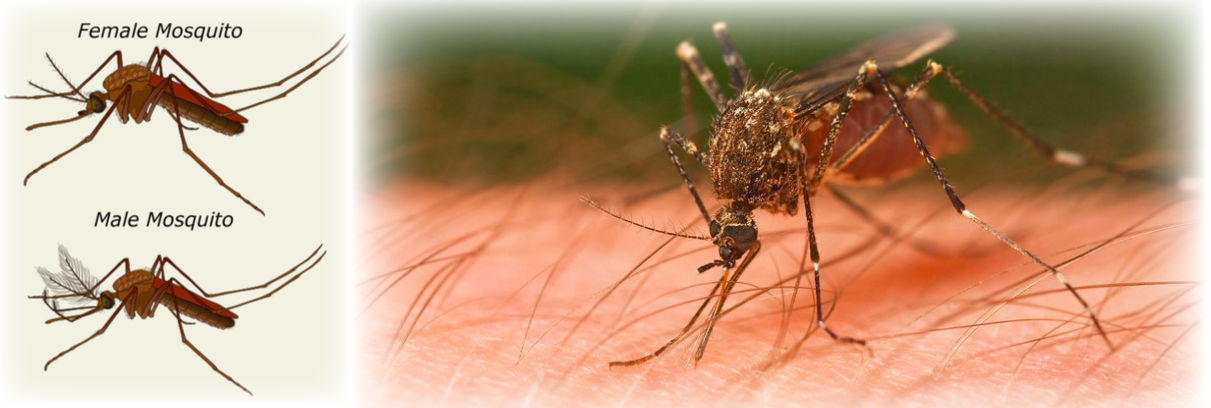Did you know that there are more than 3,500 species of mosquitoes and that only the female mosquitoes bite?
By, Pam Teel
Both male and female feed mainly on fruit and nectar plants, but the female also needs the protein in blood to help her eggs develop. Once she has had her fill of blood, she’ll rest a few days before laying her eggs. Mosquito is Spanish for little fly. The word mosquito supposedly originated in the 16th century. In Africa, New Zealand, and Australia mosquitoes are often called Mozzies.
Mosquitoes don’t have teeth. The female has highly specialized mouthparts composed of six stylets. The
stylets pierce the skin, then four of the stylets serrate capillaries. One stylet injects an anti coagulant and the
last stylet acts like a trough for the blood to be drawn into the mosquito by a pump located in the head of a
mosquito. Who would have thought that such a tiny insect would have these capabilities? The stretch recep-
tors in the female’s abdomen let her know when to stop taking blood. During mating, male mosquitoes are
attracted to the female by the whine of the female’s wings. Mosquitoes have six legs, a head, a thorax, and
an abdomen. On the head are two compound eyes, two ocelli (simple eyes), two antennas and a proboscis.
Two large scaled wings sprout from the thorax. Mosquitoes can’t fly very far or very fast and generally fly
below 25 feet. They can smell human breath, making us targets for them. They also like it when you’re
sweaty. The smells act like a dinner call to them. They use heat sensors around their mouthparts to detect warmth of your body- actually detecting the blood inside. When they land on you, they locate the best capillaries for tapping. Some species are daytime feeders while others are nighttime feeders.
Mosquitoes lay their eggs in different ways. Some lay their eggs in rafts that float on top of the water. Some lay them in moist soil or on the side of a con- tainer in expectation that the rising water cover the eggs so they can hatch. Mosquitoes that lay their eggs in rafts can lay up to 250 eggs at a time but even a raft of 250 eggs is still quite small measuring about 1⁄4 inch by 1/8 inch. That’s why it’s not a good idea to have stale water collecting around your house in buckets or other places that can collect water. The Cattail mosquito larva has a specialized abdomen that allows it to attach to cattails or other plants and breathe air through the stalk of the plant.
The good news, the average mosquito lifespan is less than two months. Males live only about eight to ten days and females can live about six to eight weeks. The female is laying eggs about every three days during that time. Some species of mosquitoes can hibernate for up to 6 months if they find a warm place. They prefer temperatures over 80 degrees and shut down for the winter at 50 degrees or less.
Bumps made by the mosquito are caused by their saliva. While one tube in the proboscis draws blood, the other pumps in saliva containing a mild pain- killer and an anticoagulant. Most people have minor allergic reactions to the saliva causing the area to swell and itch. Malaria is caused by the parasite living in the mosquito. They are can carry West Nile virus and canine heartworm. They do not transmit HIV. Just so you know, bug zappers are useless against mosquitoes. Dragonflies and fish help best control the mosquito population.

